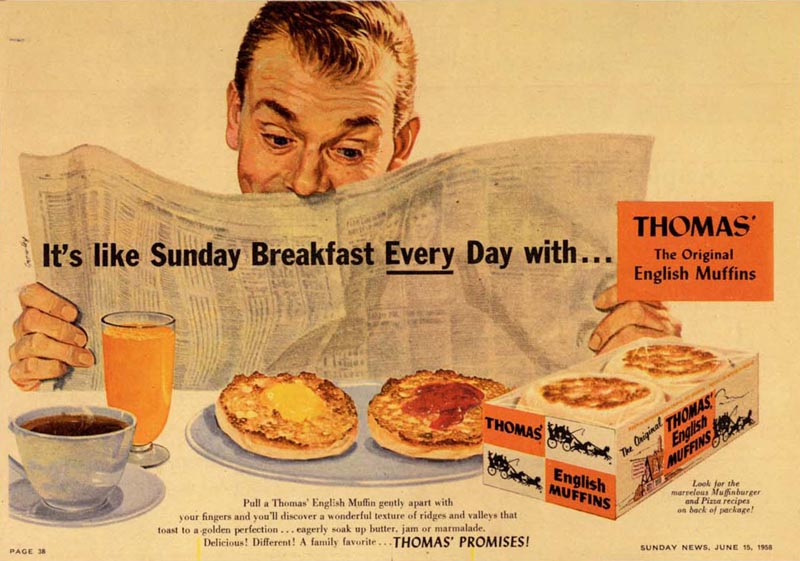
"I think I was there for a month and he never gave me a job at all. It was just horrible." Don had been hired for $75 a week because the studio owner liked his portfolio and was willing to give him a desk to sit at. "Unfortunately," says Don, "the place just wasn't all that busy. I did a couple of samples not really knowing what he wanted or what I was to do."
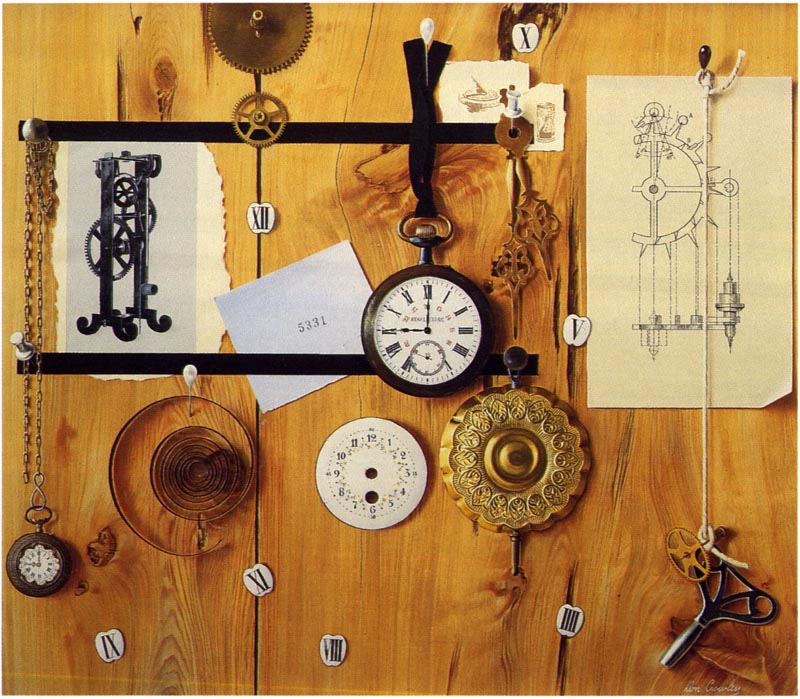 |
| "Time Pieces" by Don Crowley, 1953 Meanwhile, one of Don's friends from Art Center, Ben Wholberg, had secured a spot at the much renowned Charles E. Cooper studio... |

Don said, "About that time Mr. Cooper came up with the idea of doing some still life samples to try and get some ads for grocery stores and things like that because illustration was slowing down."
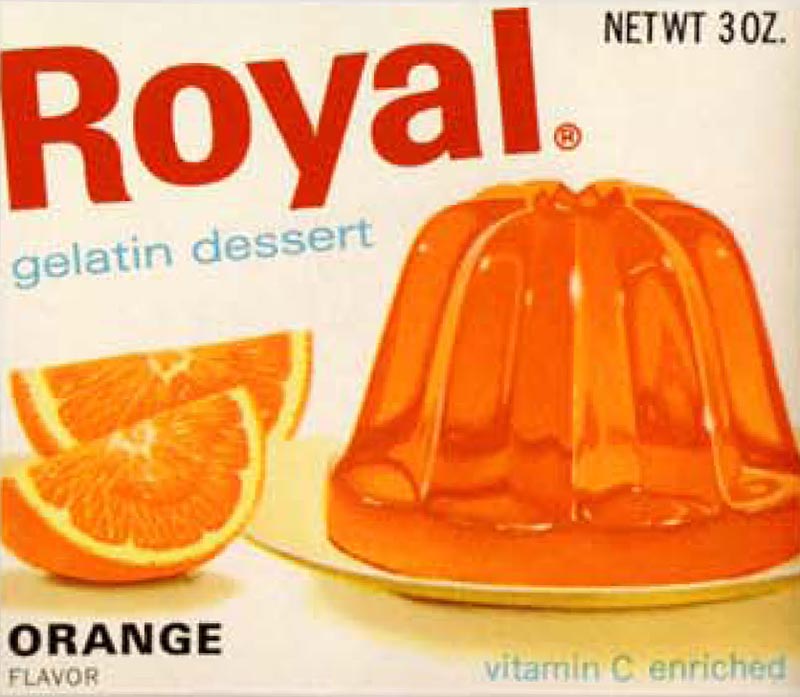
Don had shown Cooper his portfolio when he first arrived in New York ("Cooper's was my first stop," he said)... but Chuck had not been interested at that time. Now he had Ben Wholberg call Don to say he'd like to see his book again.
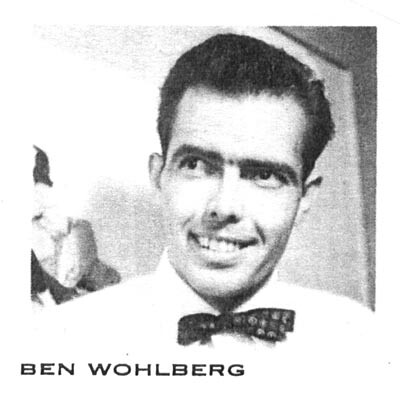
"That was really fortunate," Don said. "So I went back and he did hire me - for $50 dollars a week."
"So I went to work right away... and worked diligently, night and day, and did whatever they asked me to." When I asked about his willingness to take such a drastic pay cut Don said, "It didn't make any difference. Not a bit. Because Cooper gave me what I needed: he gave me work."
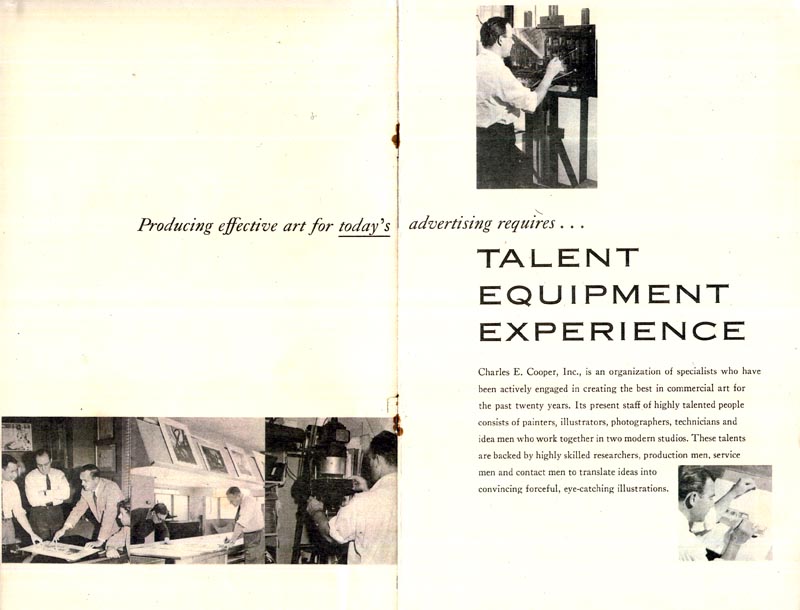
Within a month or two, with his work selling well, Don was able to move up from the weekly studio artist starter's salary to the more lucrative freelancer's arrangement of spitting project commissions 50/50 with the studio. "They had six or seven salesmen and they kept me pretty busy," said Don. "They had a much larger range of contacts and places to go."
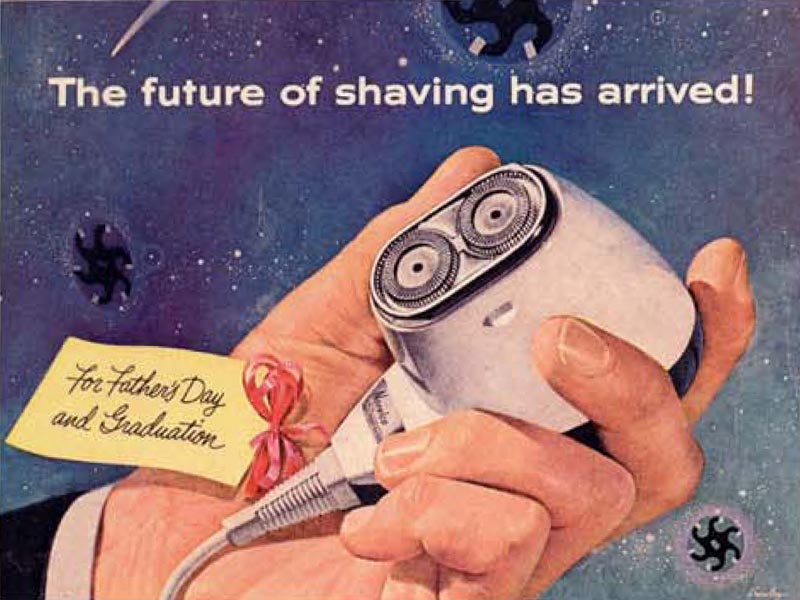
"I worked at Cooper's for about seven years and things went really quite well most of those years."
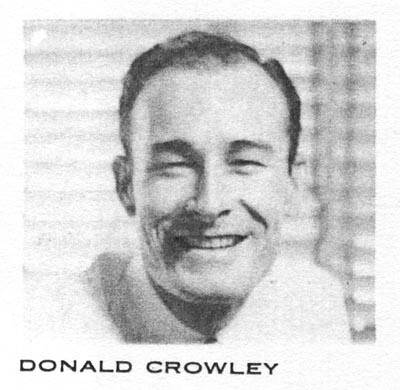
Continued tomorrow...
* Most of today's images are from the Greenwich Workshop Press book, "Desert Dreams" by Don Hegpeth and Don Crowley © 2003
* Thanks to Piper Hobbs for the 1953 Cooper Exhibit brochure that appears in today's post. The photos of Don Crowley and Ben Wohlberg are taken from that brochure. ("Time Pieces", shown near the top of today's post, was Don's entry in the Cooper Studio Exhibit)
Those salaries sound ridiculous in today's world....but they were right on. In the 50's S.F. starting artists could expect about $200 to about $275 per month, if the artist was 'special'. Commissions were 50/50, or maybe 60/40 later on. Ah....them were the days!
ReplyDeleteCharlie-
ReplyDeleteI read in Illustration Magazine #18 that Jack Potter got $2000 for a spread back in the 50's/60's.
Were clients paying that sort of fee back then?
Compared to the numbers you're talking about that's huge! Almost a years salary. Then again Jack worked for the big Magazines of the time.
DANIEL....Thanks for the input. Remember, late 40's and early 50's started out slowly....but prices, wages, etc. doubled or tripled between '50 and '60. $2000 for a top ad illustration in the east or the west would not be unusual. But new, untried, artists back there always started frugally, as they did here.
ReplyDeleteI wish they had equivalent fees today! $2000 back then went a long way. No wonder why Jack was able to move to Paris for a year.
ReplyDeleteBeing an illustrator during the 50's/60's must have been an interesting time.
When I started looking for my first job out of art school in 1963, there was a heavy recession that was causing some well established studios to close their doors or cut way back, and the ad agencies were also cutting back. So, after looking all over the S.F. bay area, my first job was for a nuts and bolts studio called Holt Graphic Arts. He told me he would only pay me by the hour ($2.00 per hr.), and only if he had work for me to do that day.. no work, no pay. He was a full service studio and I made it my mission to learn everything that needed to be done in the studio, in order to stay busy. I worked 8 hours five days a week for two year, and made about $4,200. a year. $8,000. to $10,000. a year was considered a very good salary at that time, but not a salary for an inexperienced novice out of art school. But, it was an excellent learning experience for me, and I had two good years of practical experience and had a variety of reproduced samples in my improved portfolio. Most of us expected to start at the bottom, so it wasn't a shock to start at a very low income and work our way up.
ReplyDeleteThe studio owner's twin brother moved out from the east coast and they went into partnership, and I had to look for a another job. I started doing freelance storyboards, comps and finished illustrations for ad agencies, that payed at least $8.00 to $10.00 an hr., but it was spotty work and unreliable at that time. Like most illustrators, each decade we made increasingly more money that would out-pace the rise in the cost of living. Perserverance and hard work always paid off.
Tom Watson